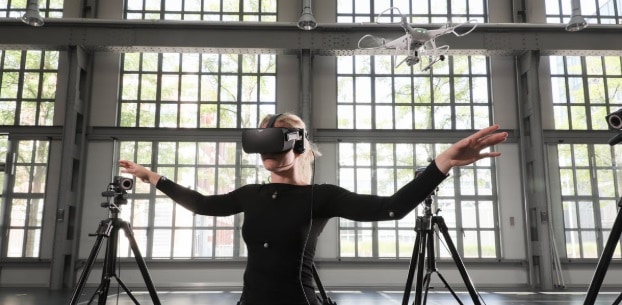Controlling Drones Without Controllers | EPFL Has Their Say
So what’s up with that? Who has come up with the ability to control drones with anything other than a controller (such as a smartphone or a fully dedicated controller)? Well, we’re not sure, but there have been a couple of drones that come with the ability to control them with your upper body.

This was unheard of back when drones first started flooding the market. I mean, how would you even do it? Swim around through air? Move your head? Well, all of these questions have been answered. However, why would you even change a well-known control method just for something that is out of the ordinary and seems inaccurate? Well, researchers from EPFL (Ecole Polytechnique Federale de Lausanne) have reached the conclusion that drones are actually easier to fly using torso movements. You basically move in the same way you want the drone to move, hence why it’s more efficient.
A Novel Approach
Okay, so the technology we have right now cannot fully emulate your body’s movements (albeit it’s damn precise!). A couple of commercial drones come with the body recognition feature but, again, this is new tech and some more time must pass to iron out all the issues.
However, it’s not going to take long, according to EPFL. They have developed a system that gives you complete control of your drone – through the use of your upper body. This system is still in development and doesn’t seem simple enough to push into production. Although, we’re sure that a couple of drone companies will take ideas from this and create their very own, handheld drone flying experience.
“Using your torso really gives you the feeling that you are actually flying. Joysticks, on the other hand, are of simple design but mastering their use to precisely control distant objects can be challenging,” – Jenifer Miehlbradt from EPFL
Research Results
The conclusion is as follows – The first test was based on torso control and featured 17 individuals taking part. 19 markers were placed on various locations on the upper body of the participants. Each participant was given VR goggles and they were placed in the cockpit of the drone. Well, not exactly a cockpit, but behind the drone. Out of the 19 markers, only 4 were needed to actually fly the drones properly. On the other hand, the joystick test was done with the use of a traditional controller/joystick. There were 39 people on this side of the test and the researchers compared the two flights between joystick pilots and torso pilots.
In the end, the torso-guided drones were better than joystick-controlled ones in reliability, precision, and training duration (which was almost nonexistent for upper body pilots).
Conclusion
Due to the results of this test, we can easily conclude that a new method of drone control will soon appear on the market. The evidence is here and all we need is a method through which you’d be able to operate the drone in a relatively simple environment. Drone companies may have already started pouncing on this concept so there’s not a lot to wait between finally being able to fly a drone – whilst acting like you’re flying!